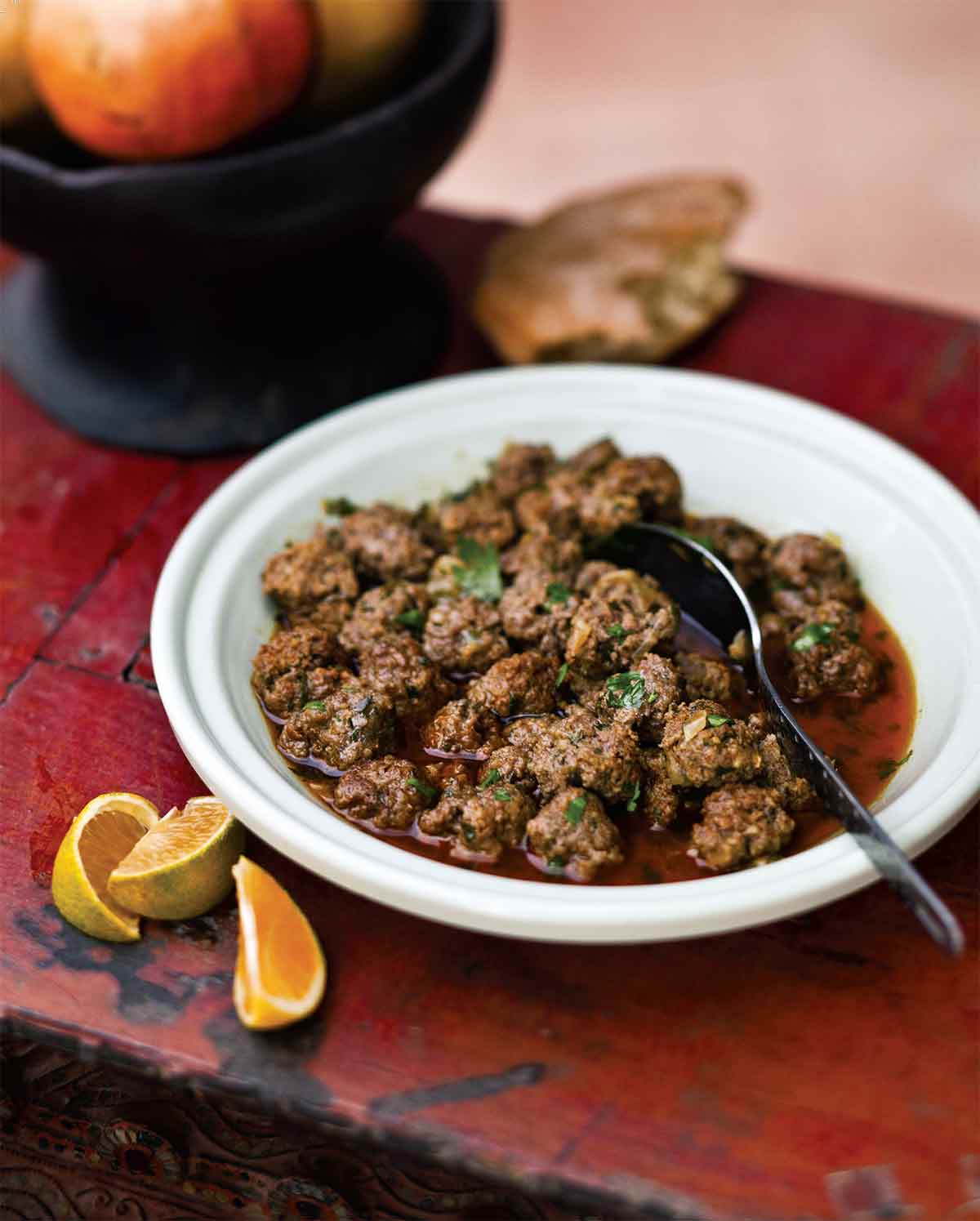
Kefta is the savory spiced ground meat of Morocco, served in meatball form or used as stuffing. Serve the kefta directly from the tagine or pot, with warm slices of toasted bread for mopping up the sauce. In some Moroccan homes where fiery dishes are appreciated, a whole dried red pepper is added to the sauce.–Paula Wolfert
What’s so special about the sauce?
Cookbook author and Mediterranean cooking monarch Paula Wolfert does something in this recipe that came as something of a surprise to us. First, she soaks saffron threads in hot water. The elixir, which Wolfert dubs “saffron water,” summons more of the spice’s aroma and flavor than simply crumbling a few dry strands into a dish, she explains. Given its seeming superpowers, saffron water isn’t just a clever cooking technique, it’s a savvy spendthrift tactic when you consider the justifiably steep price of a stash of saffron. “In fact,” she continues, “I’ve discovered that if I soak all the ground spices called for in a recipe in a little saffron water before adding them to the dish, their combined flavors are intensified and better distributed.” But actually, that wasn’t what surprised us. What was new to us was how she keeps a stash of extra saffron water on hand for everyday use. Although she didn’t go into detail as to what those uses are, here’s how we’d have our way with it:
Use it as part of the liquid when making rice or any rice dish;
Stir it into cream sauces;
Sip it as a warm tonic (saffron is quite the restorative, you know);
Toss it into a vegetable or seafood soup;
Pour it into that roasting pan when you deglaze it;
Dump over partially cooked sliced carrots and allow it to reduce down to a glaze with a dribble of honey;
Whisk into a vinaigrette (bet a lemon and honey vinaigrette would be just lovely with this);
Turn it into a hot toddy with a splash of brandy or bourbon or….
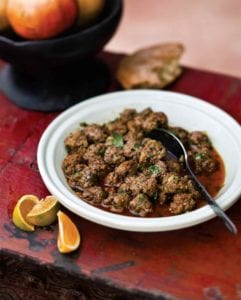
Moroccan Meatballs ~ Kefta Tagine
Ingredients
For the saffron water (you will only need to use 1/4 of this in the recipe; see the LC Note above for other uses)
- 1/2 teaspoon crumbled saffron strands
- 1 cup hot water
For the kefta
- 1 pound lean ground lamb or beef
- 3 tablespoons crème fraîche or grated beef suet
- 2 teaspoons sweet paprika
- 1 teaspoon ground cumin, preferably Moroccan
- 1 teaspoon ground coriander
- 3/4 teaspoon ground cinnamon, preferably Ceylon
- 1/4 teaspoon grated nutmeg
- 1/4 teaspoon cayenne
- Salt and freshly ground black pepper
- 2 tablespoons roughly chopped flat-leaf parsley
- 2 tablespoons roughly chopped cilantro
For the sauce
- 1 medium red onion, grated
- 2 tablespoons (1 oz) unsalted butter
- 1/4 cup saffron water
- 1 teaspoon sweet paprika
- 1/2 teaspoon ground cumin, preferably Moroccan
- 1/4 teaspoon ground ginger
- 1/4 teaspoon freshly ground black pepper, or to taste
- 2 to 3 pinches cayenne
- Pinch of ground turmeric
- 1/2 teaspoon salt, or to taste
- 1 cup roughly chopped cilantro
- 1/2 cup hot water
- 2 tablespoons fresh lemon juice
Instructions
Make the saffron water
- Toast the saffron strands in a warm, but not hot, skillet for just a minute or so. Crush again.
- Soak the crushed, toasted saffron strands in the hot water and store in a small jar in the refrigerator for up to a week. Pour out 1/4 cup saffron water for use in this recipe and reserve the remaining 3/4 cup for another use (see LC Note above). For longer storage of the saffron water, quadruple the recipe quantities above, pour the saffron water into a plastic ice cube tray, and freeze into cubes. Once they are frozen, shake out the cubes and store in a freezer bag. Each cube will be equivalent to 2 tablespoons saffron water or a good pinch of dried saffron threads.
Make the kefta
- Combine the ground lamb or beef, crème fraîche or beef suet, paprika, cumin, coriander, cinnamon, nutmeg, cayenne, salt and pepper, parsley and cilantro in a food processor and blend until a paste forms. Transfer to a bowl, cover, and refrigerate for at least 30 minute or until ready to cook.
- Shape the meat mixture into 24 olive-size balls and place on a plate. If you think you may not have seasoned the meatballs sufficiently with salt and pepper, pinch off a tiny bit of a meatball, sizzle it up in a skillet, and taste it. Season the meat mixture accordingly.
Make the sauce
- Place an 11- or 12-inch tagine or cazuela or Dutch oven on a heat diffuser, if you have one, over medium-low heat. Add the grated onion, butter, saffron water, spices, salt, 3/4 cup of the cilantro, and hot water.
- Slowly raise the heat and bring to a boil, then reduce the heat to medium-low, cover, and simmer gently to blend the flavors, about 10 minutes.
- Add the kefta, or meatballs, to the sauce and poach, covered, for 30 minutes, turning them midway through the cooking.
- Add the lemon juice to the sauce. Taste and correct the seasoning with salt and pepper. Transfer the hot pot to a wooden surface or a folded towel placed on a serving plate and garnish with the remaining 1/4 cup cilantro.
- Spoon the kefta and sauce directly from the pot onto plates, with warm slices of toasted bread for mopping up the sauce.
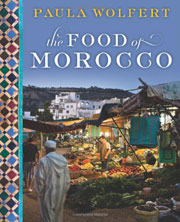
Nutrition
Nutrition information is automatically calculated, so should only be used as an approximation.
Recipe Testers’ Reviews
Yum! What a great recipe to make and use my new tagine. Everything came together as written. I did learn that saffron doesn’t last forever (googled that) so it was a good excuse to buy some new. I made extra saffron water for the freezer, because we are definitely having this again. All the spices made for a complex sauce with no spice overpowering. I used crème fraîche, and I believe it tamed the lamb taste. I would make the meatballs larger next time, but that is a personal preference. The only question I had was which side of the grater to use. I used the larger holed side, and it gave the sauce a little texture. My testers really enjoyed this recipe.
It may just be that I’m biased towards any kind of lamb meatball, but I thought this tagine was wonderful. The richness of the meatballs is nicely counterbalanced by the bright, lemony sauce. Delicious. Easy to make, too. Using a food processor, these meatballs come together quickly. And the 30-minute poaching time — pretty quick, compared to many tagines — makes this recipe doable on any night of the week. The only way in which this recipe differed from expectations was that, following the instructions to make “olive-sized” meatballs, I ended up getting 36, rather than the 24 specified. No complaints about that though. They still fit in my tagine in one layer, and cooked up perfectly in the time specified.
For an exotic meal, this one has a stress-free preparation. The saffron water is simple to make, and I like the idea of freezing the leftovers for other dishes. I put the sauce spices in the saffron water as the recipe suggested. The aroma coming from the stove was absolutely wonderful. The resulting meatballs were very delightful. The flavor of the spices was delicate and warm. It was not overwhelming or aggressive. Everyone in the house enjoyed our first venture into Moroccan food, including my teenage son. This was a great way to try a unique dish.
What a delicious combination of flavors! All the herbs and spices worked so well together and the lemon juice added a good punch at the end. It could easily be a quick weeknight dinner. I served plenty of toasted bread for mopping up the sauce, and everyone approved. This is the perfect recipe to begin enjoying Moroccan food. It’ll be in my recipe files for a long time!
I had originally thought that I would make the recipe again, but would need to up the spices when I did. However, when we had the leftovers the next day, everything was plenty spicy and flavorful. It took a day for the spices in the meatballs to really take hold. I questioned the amount of the liquid in the recipe. There hardly seemed to be enough for the meatballs to poach in, but they did cook fairly quickly. They actually cooked in less than half the stated amount of time. This may be because of the size of the meatballs I made. The recipe states to make “olive-sized” meatballs. I rolled what I would call a large “olive-sized” ball, and the meat mixture yielded 35 meatballs, not 24 as stated in the recipe. I really have no idea what size Paula Wolfert wanted the meatballs to be. I am curious to see a better description for the size, e.g., in inches. People need to check them much earlier, like I did. However, bottom line, this was a delicious meal. The saffron water was very easy to make. I can see using it in many other dishes. I had leftover creamy mashed potatoes, which were a wonderful base for the meatballs and the sauce.
I found the ingredients for this recipe tedious to measure, but the end result was worth it. The final dish was well spiced and yet was not overpowering in its spiciness. The saffron water imparted a lot of saffron flavor to the dish, and filled the house with the aroma of saffron. Normally I would suggest frying the onion in the butter first, rather than boiling it, and similarly the spices. However I found the onions and spices tasted cooked, using the method suggested here. I found the kefta hard to turn in the pan without damaging them, and felt that they needed turning earlier than halfway through. The pan I used was full with kefta, and so it was hard to move them around. However the recipe was a hit, although I would be tempted to be less exacting with the spice measurements next time. I would also suggest having lots of bread to hand to mop up the sauce.
This is a very nice introduction to Moroccan food. It’s a fairly simple and straightforward recipe, although be prepared for spending quite a bit of time rolling the meatballs. It would help to keep half of the meat mixture in the refrigerator while you roll the other half. Making meatballs that are truly olive-sized takes a long time but it is worth the effort since the flavors are able to penetrate the smaller meatballs. If I made a slight adjustment to the recipe, it would be to use perhaps 85/15 meat, because the meatballs are so small, and despite the poaching process, they were a little bit drier than I would have liked. Having bread as a side to soak up the sauce is a must! This flavorful poaching liquid is almost as good as the meatballs themselves. A definite repeat.
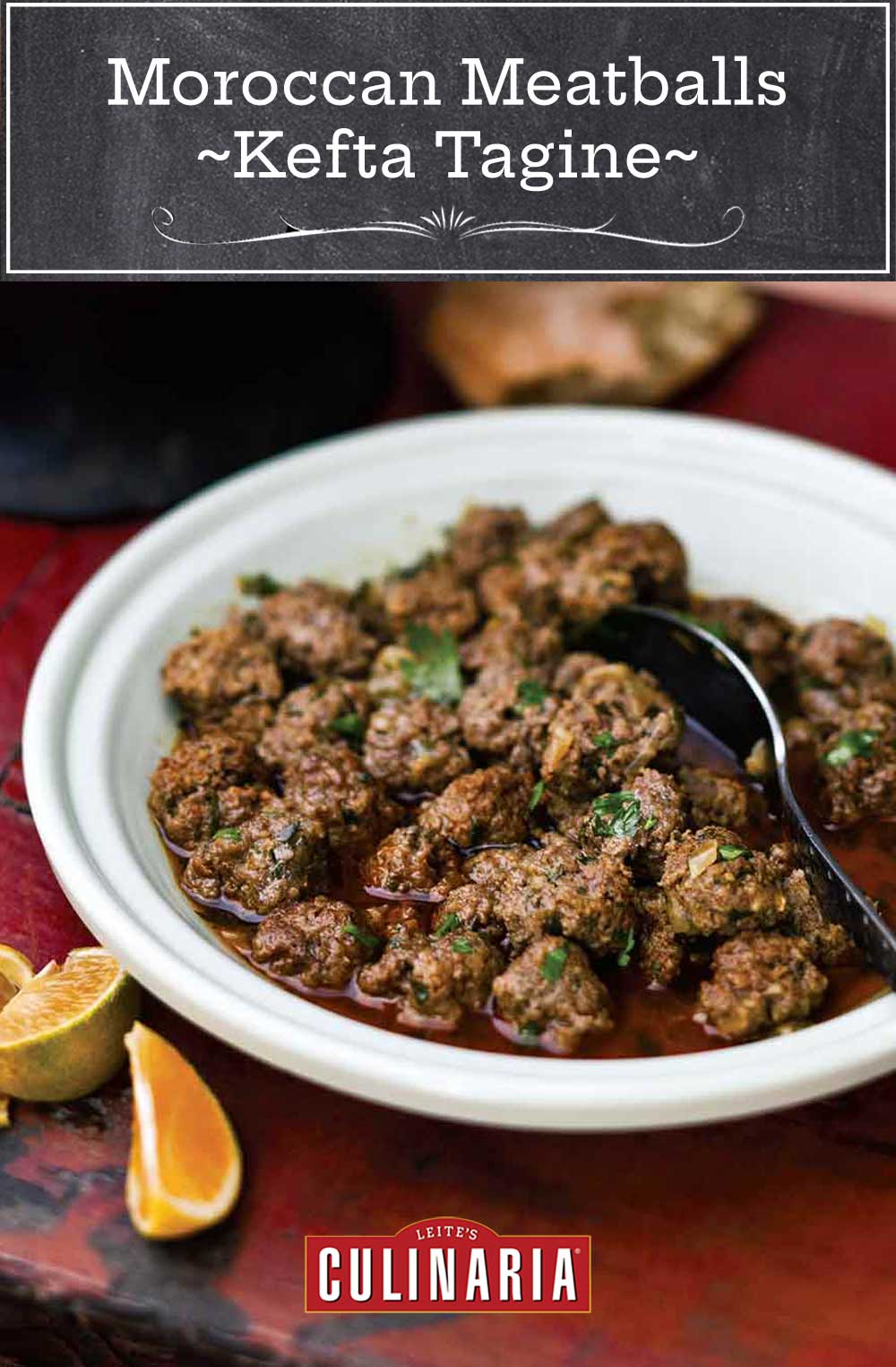








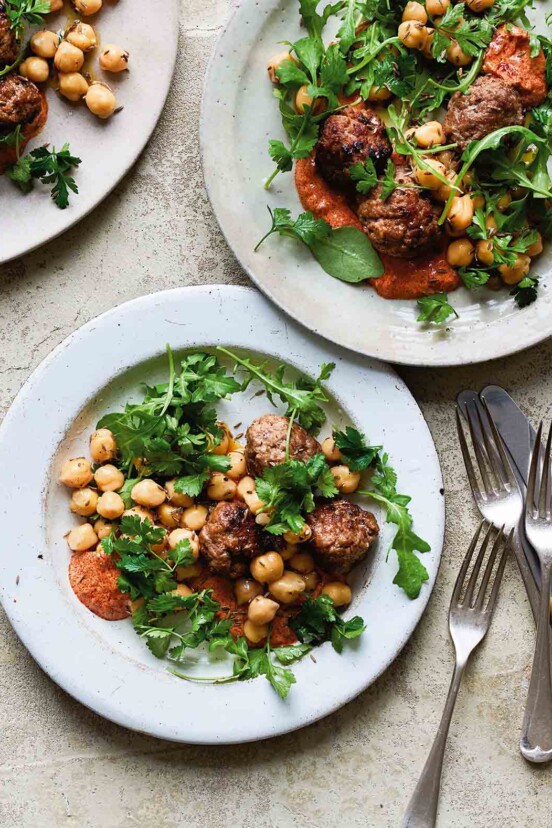
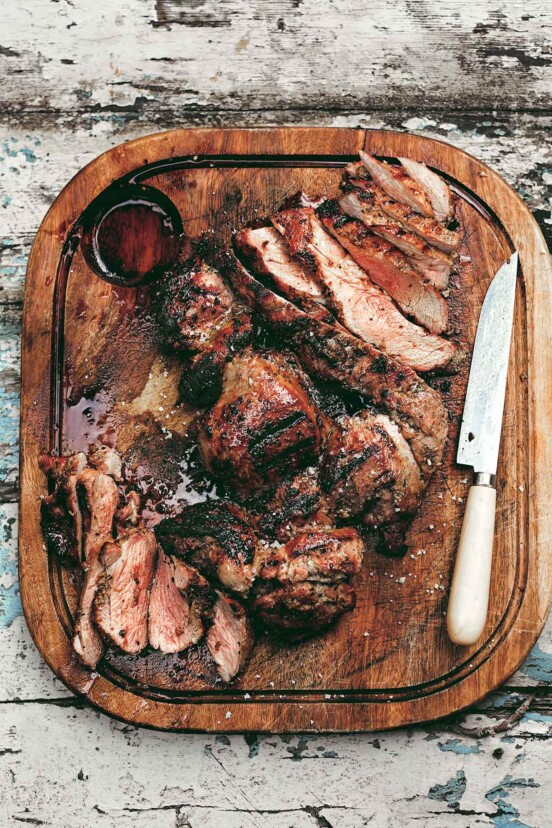









I haven’t made this yet BUT I’ve made my first mistake. I steeped 1/2 a teaspoon of saffron in a cup of hot water only to read that I only needed 1/4 of that.
I get that the recipe’s author finds the saffron water a useful thing to have on hand but with an expensive spice that can be sold in 1/2 teaspoon increments, I wish I’d made what would be used immediately.
I’ll get around to finishing it in a few days when I’ve gotten the ground lamb and creme fraiche but I’d really recommend adding a note to the top of the recipe indicating that people might or might not want to use so much saffron for the actual kofta.
Meanwhile, it was curious to see that the Moroccan word for meatball is the same as the Indian word.
PS YES, I know that was my own impulsive mistake. I’d still recommend the edit.
Thank you, Rainey. We appreciate that saffron is very expensive, and that not everyone wants to keep the saffron water on hand. I have updated the ingredients to note that it isn’t all used, should the reader want to reduce the amount of saffron water they make. We hope you have the opportunity to try some of the other suggestions for uses for the saffron water listed above.
Thanks. I’ve gotten my ingredients and look forward to trying it!
Can’t wait to hear how it turns out, Rainey.
It was delicious! Tons of flavor from the rich combination of spices but not a hint of heat (we’re weenies).
My husband, who’s been to Morocco, said it reminded him of things he ate while he was there, tho he said he remembers lots more vegetables.
We had it with a rice pilaf — which benefitted from some of that extra saffron water. ; > When I make it again — and I definitely will! – I’ll double the amount of sauce, possibly thicken it a bit at the end (perhaps some beurre mani?) and simmer some chunks of carrot with the kofta.
Nice! I’m so please that you both loved it. Thanks, Rainey.